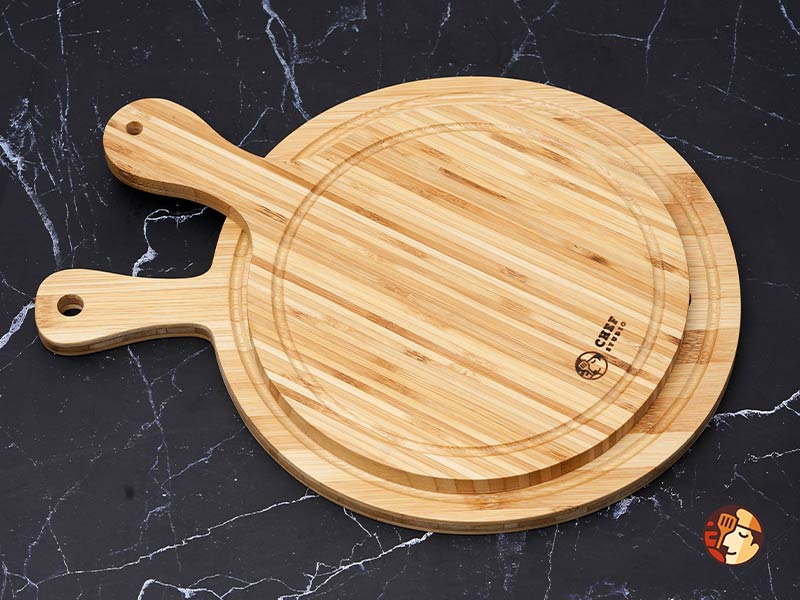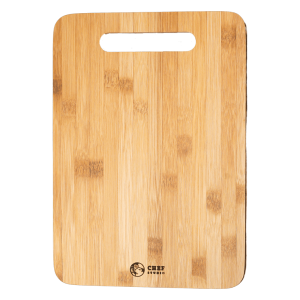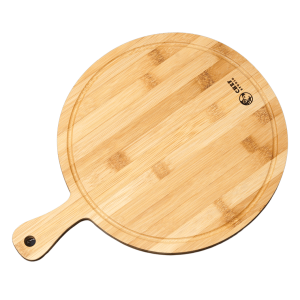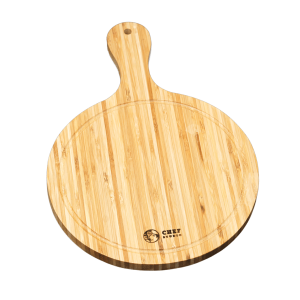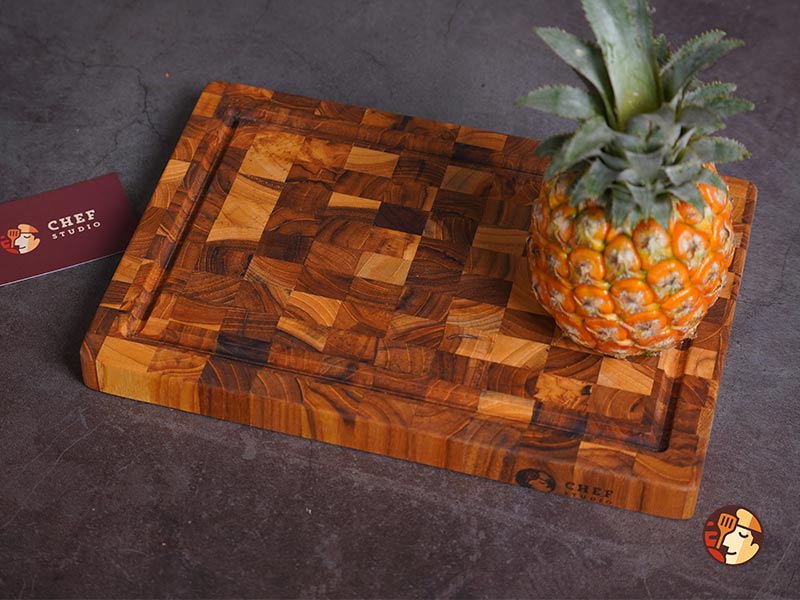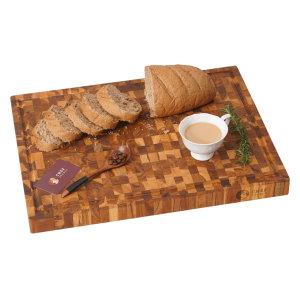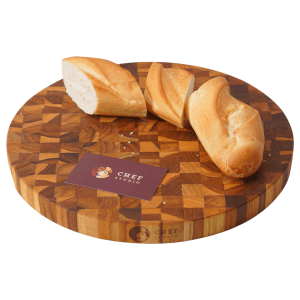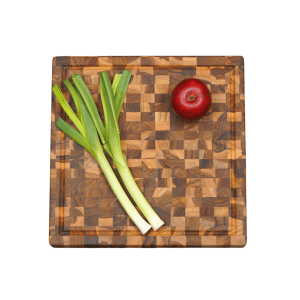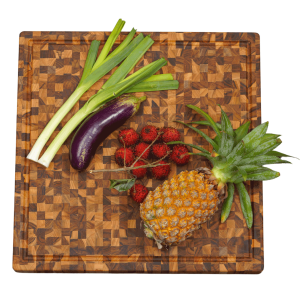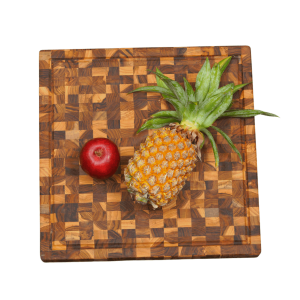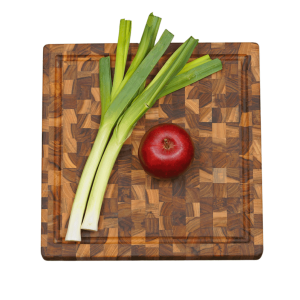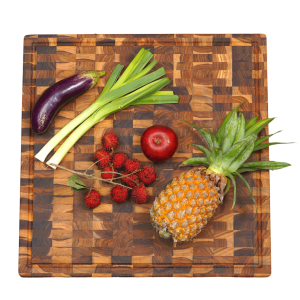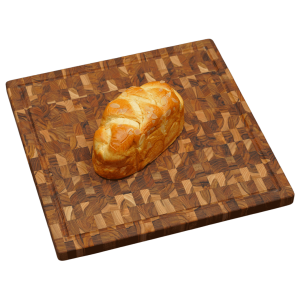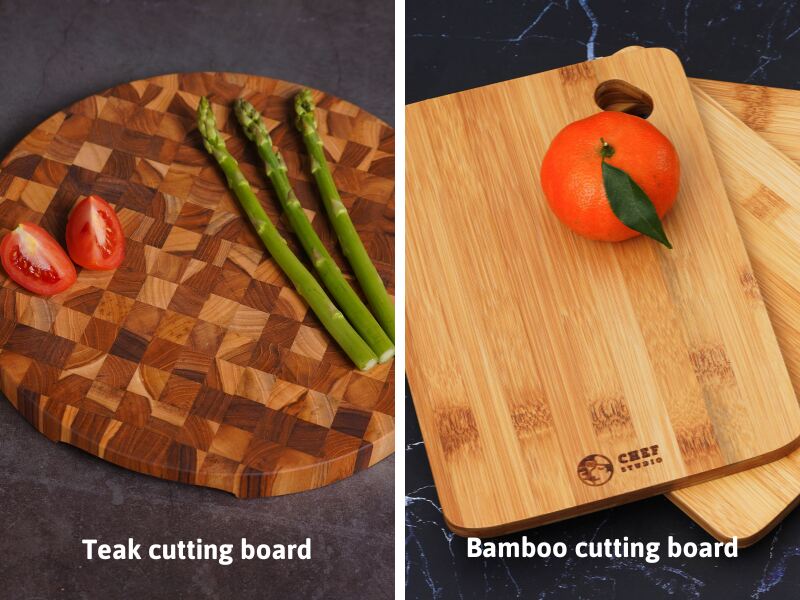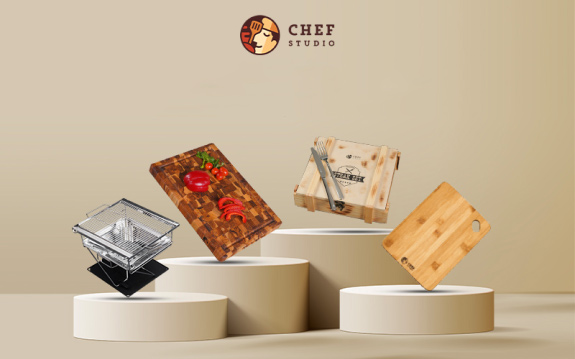Compare Bamboo vs Teak cutting board in detail
Choosing the right cutting board is crucial for any kitchen, and two popular options on the market are bamboo and teak cutting boards. Both materials have their own distinct properties and advantages. In this comparison, Chef Studio will delve into the details of bamboo vs teak cutting boards to help you make an informed decision for your culinary needs.
Bamboo cutting board pros and cons
Bamboo cutting boards have garnered attention for their eco-friendly nature and attractive appearance. Before comparing bamboo vs teak cutting boards, let’s delve deeper into their advantages and disadvantages:
Pros
- Sustainability: Bamboo is a rapidly renewable resource, growing much faster than hardwood trees. Its quick growth rate and ability to regenerate after harvesting make bamboo cutting boards an environmentally sustainable choice.
- Aesthetics: Bamboo’s natural grain and light color give it a modern, stylish appearance that can complement various kitchen decors. Its sleek finish adds a touch of sophistication to any culinary space.
- Durability: Bamboo is known for its resilience and resistance to cracking, warping, and splitting, making it highly durable for everyday kitchen use. It can withstand heavy chopping and slicing without sustaining damage, ensuring longevity.
- Lightweight: Bamboo cutting boards are lightweight and easy to handle, making them convenient for food preparation tasks. They are portable and can be moved around the kitchen effortlessly.
- Eco-Friendly Manufacturing: Bamboo cutting boards are often produced using environmentally friendly methods, such as low-impact harvesting and non-toxic adhesives, further reducing their carbon footprint.
Cons
- Knife Wear: While bamboo’s hardness contributes to its durability, it can also be a drawback. Bamboo is harder than many hardwoods, which means it can quickly dull knife blades, leading to more frequent sharpening.
- Hygiene Concerns: Over time, the surface of bamboo cutting boards may develop grooves, scratches, and fissures, creating potential breeding grounds for bacteria. Additionally, bamboo fibers can become frayed or porous, trapping food particles and moisture and increasing the risk of contamination.
- Cost: Compared to plastic or low-quality wooden cutting boards, bamboo cutting boards tend to be more expensive. While they offer durability and sustainability, their higher price point may deter budget-conscious consumers.
Overall, bamboo cutting boards offer several benefits, including sustainability, durability, and aesthetics, but they also come with considerations regarding knife wear, hygiene maintenance, and cost. Understanding these pros and cons can help consumers make informed decisions when choosing kitchen utensils.
Characteristic of Teak cutting board
Teak cutting boards are renowned for their exceptional durability and natural beauty, making them a popular choice among home cooks and professional chefs alike. Let’s learn about the pros and cons of teak cutting boards before considering Teak vs Bamboo cutting boards.
Pros
- Durability: Teak is a hardwood known for its toughness and resilience. Teak cutting boards contain amount of Silica which can withstand heavy use without chipping, cracking, or warping, making them a long-lasting option for your kitchen.
- Hygienic: Contrary to popular belief, wooden cutting boards like teak are hygienic. Studies have shown that bacteria tend to accumulate more on plastic cutting boards than on wooden ones. Moreover, the natural oils present in teak wood possess antimicrobial properties, further enhancing its hygienic properties.
- Natural Beauty: Teak cutting boards boast a rich, warm color and unique grain patterns that only become more pronounced over time. As you use your teak cutting board, it develops a beautiful patina that adds character to your kitchen.
- Low Maintenance: Teak cutting boards require minimal maintenance. Regular oiling with food-safe mineral oil helps to keep the wood moisturized and prevent it from drying out or cracking. Additionally, teak’s natural oils provide some resistance to water and stains, making cleaning a breeze.
- Affordability: Despite their premium quality and durability, teak cutting boards are often more affordable than other types of hardwood cutting boards, making them an excellent investment for any kitchen.
Cons
- Traditional Appearance: While teak cutting boards are prized for their classic elegance, some may find their traditional appearance to be a bit dull or outdated compared to more modern materials. However, their timeless charm and superior performance outweigh any concerns about aesthetics.
- Mislabeling: Due to the popularity of teak wood, some unscrupulous vendors may attempt to pass off inferior or cheaper wood species as teak. It’s essential to purchase teak cutting boards from reputable sources to ensure you’re getting genuine teak wood.
In conclusion, teak cutting boards offer a winning combination of durability, hygiene, natural beauty, and affordability, making them an excellent choice for any kitchen. With proper care, a teak cutting board can serve as a reliable kitchen companion for years to come.
Explore: Should you invest in a Teak Chef Studio cutting board?
Bamboo vs Teak cutting board – Which one is better?
When comparing bamboo vs teak cutting boards, it’s essential to consider various factors to determine which one is better suited for your kitchen needs. While both materials have their advantages and disadvantages, teak cutting boards often come out on top for several reasons. Continue reading to know whether a Teak or Bamboo cutting board is better:
Visual appeal
Teak cutting boards are prized for their natural beauty, featuring rich colors and unique grain patterns that develop over time. In contrast, bamboo cutting boards have a more uniform appearance that some may find less visually appealing.
Bamboo vs Teak cutting board durability
Teak wood is renowned for its incredible durability and resilience to wear and tear. Teak cutting boards maintain their shape well and develop minimal scarring even with regular use of sharp knives.
On the other hand, while bamboo cutting boards are also durable, they tend to be harder, which can result in quicker dulling of knife blades.
Maintenance
Both bamboo and teak cutting boards require relatively low maintenance and are easy to clean. However, bamboo cutting boards may become less hygienic over time as they develop a fuzzy surface that can harbor bacteria, whereas teak boards maintain their hygienic properties with proper care.
Cost
Bamboo cutting boards are typically less inexpensive than teak wood cutting boards, making them a more affordable option for most home cooks. This cost difference may make bamboo cutting boards more accessible to a wider range of consumers.
In conclusion, while both bamboo and teak cutting boards have their merits, teak cutting boards often offer superior durability, visual appeal, and affordability compared to bamboo. Ultimately, the choice between bamboo vs teak cutting board will depend on your personal preferences and budget constraints.

